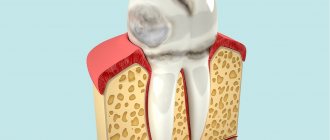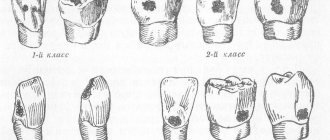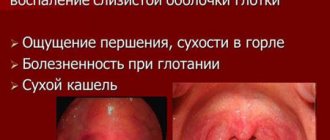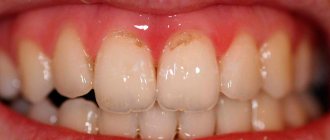Gingivitis in pregnant women: causes
Gingivitis is an infectious disease, and its main cause is the proliferation of pathogenic microflora. The following factors contribute to the development of this disease:
- Hormonal changes
During pregnancy, a woman’s body experiences serious stress associated with a sharp and significant change in hormonal levels. This change affects all processes occurring in the body: local and general immunity decreases, metabolism changes, the body becomes more susceptible to infections and other unfavorable factors.
- Lack of vitamins and minerals
Bearing a fetus requires the expenditure of large amounts of nutrients. During pregnancy, many women suffer from hypo- and vitamin deficiency, from a lack of essential minerals and trace elements. This negatively affects the health of various organs, including the protective functions of the mucous membranes of the oral cavity.
- Failure to comply with hygiene rules
The appearance of gingivitis is promoted by the accumulation of food debris and waste products of microorganisms between the teeth and in the gum pockets. Insufficient oral hygiene creates favorable conditions for the proliferation of pathogenic bacteria. The presence of tartar and plaque on the teeth also contributes to the development of gingivitis.
For expectant mothers.
Prevention and treatment of gingivitis in pregnant women (professional hygiene: ultrasound + AirFlow) The second trimester of pregnancy (from 14 weeks to 28 weeks) is the best time to visit the dentist. +7 (multi-channel) We are waiting for you in our clinic!
Pregnancy is a wonderful state for a woman, but it can be associated with some unpleasant moments. According to statistics, about 70% of pregnant women experience such an unpleasant disease as pregnancy gingivitis.
Didn't find the answer? Ask a doctor consultant online for free
Contrary to popular belief, gingivitis in pregnant women occurs in absolutely healthy pregnant women, as often as in women with pathology or complicated pregnancies.
Gingivitis is an inflammatory process in the oral mucosa. There are many gingivitis that are common to both children and adults. Pregnancy gingivitis is a special type of gum inflammation that is typical only for pregnant women or children during puberty. If we are talking about pregnant women, then the symptoms of the disease disappear with the birth of the child, if we are talking about teenagers, then the symptoms of the disease will pass from the moment when all hormonal changes in the child’s body are completed.
What are the causes of gingivitis?
Pregnancy gingivitis or hypertrophic type of gingivitis is the most common form of the disease.
There are many reasons for the occurrence of gingivitis, but the main reason is hormonal changes in the body during pregnancy. During the period of gestation, many changes occur in a woman’s body, this applies not only to hormonal levels. Changes are controlled by the work of hormones - progesterone, gonadotropin. These hormones are produced by the placenta or the fetus itself. Only in fact, before childbirth, the concentration of hormones decreases, and the clinical symptoms of the disease gradually decrease, but may return during breastfeeding.
The common causes of gingivitis should not be ignored. The most common cause is pathogenic microflora and the formation of dental plaque. It is under the influence of waste products of microorganisms that gum inflammation develops.
There is another opinion among dentists; the cause of the disease lies in a lack of certain vitamins and minerals, early toxicosis of pregnancy and some metabolic disorders. All these factors are typical for pregnant women.
The first symptoms of the disease may appear as early as the first trimester of pregnancy and may progress until the birth of the child, and already in the second or third trimester the disease may become chronic.
How does the disease manifest?
The main and most important symptom of gum disease is bleeding when brushing your teeth; as the disease progresses, bleeding can occur even with the slightest injury or food intake. Gradually, the gum tissue and gingival papilla grow to such an extent that they can cover the crown of the tooth to the middle or most of it.
In the oral cavity, swelling and growth of gum tissue are noticeable; pain in the gums is also possible, which can intensify with palpation. Bad breath (halitosis) may occur. Massive dental deposits are noticeable on the teeth.
There are three degrees of severity of the disease, which directly reflect the extent to which the gums have grown. With mild severity, gum tissue can cover about a third of the tooth crown; along with this, bleeding of the gums is noted when brushing teeth; there is usually no unpleasant odor.
With moderate severity of the disease, inflamed gums can cover about half of the tooth crown. At this stage of the process, bleeding of the gums is observed when brushing teeth, when eating hard foods that require thorough chewing. There is an unpleasant odor from the mouth and abundant dental plaque.
If the inflamed tissue covers more than half of the tooth crown, then we are talking about a severe stage of the disease. In which, in addition to the general symptoms, pain in the gums is also added.
Treatment of gingivitis
When treating gingivitis, dentists use a specific regimen. The main goal of treating gingivitis in pregnant women is to eliminate and control the causes of the disease. Ideally, treatment should begin before pregnancy – at the time of pregnancy planning. During a preventive examination, the doctor will treat all carious teeth, perform professional oral hygiene - remove dental plaque and locally saturate the teeth with mineral components.
During pregnancy, and even more so with the development of gingivitis in pregnant women, such manipulations are quite difficult to carry out, some of them are completely contraindicated. The importance of this manipulation lies in the fact that in the absence of tartar and a sanitized oral cavity, the risk of developing gingivitis is reduced, and even if the disease occurs, it will be in a mild form.
But, in most cases, pregnancy is not planned, and an already pregnant young lady has to visit the dentist. Treatment always begins with the removal of dental plaque, since if tartar does not cause the disease, it greatly complicates it. Removing tartar due to gingivitis is associated with a number of difficulties. Overgrown gum tissue does not allow plaque to be completely removed, as it covers it. In order to remove it, local anesthesia is often necessary, which does not enter the general bloodstream, and therefore to the child.
In order to remove tartar, it is also necessary to use special preparations that will help the gums recede to the required distance.
After removing the tartar, the doctor begins anti-inflammatory therapy, which is carried out in the dentist's chair. The doctor can give recommendations, for example, the use of various elixirs, ointments and gels to stop inflammation in the gums. To relieve inflammation, you can use rinses or baths with various herbs that have an anti-inflammatory effect - chamomile, sage, etc. In addition, the doctor will select the right oral hygiene products and items, and teach a special method of brushing teeth for patients with gum disease.
To restore the normal size of the gums, various drugs are used - lidase or glucose. According to indications, gum massage procedures, irrigation with medicinal preparations or herbal decoctions, electrophoresis, etc. can be prescribed.
In extreme cases, with severe severity, surgical intervention may be prescribed - gingivectomy. The operation is performed under local anesthesia and involves removing excess gum tissue.
It is imperative that a pregnant woman inform her gynecologist about the disease; when choosing vitamins and minerals, the obstetrician-gynecologist will also focus on gum disease. Tablet forms of vitamins alone are not enough; a pregnant woman’s diet should include as many fresh vegetables and fruits as possible. The diet must be correct and balanced.
Prevention
Prevention of gingivitis in pregnant women is aimed at eliminating all possible causes of the disease. The most important attention must be paid to oral hygiene, even despite bleeding gums. Many young ladies refuse to brush their teeth at all, or take care of themselves; usually women are frightened by the presence of blood on their toothbrush. As a result, the disease only gets worse, oddly enough. In the absence of adequate teeth cleaning, microorganisms in dental plaque begin to multiply even more actively, forming an even larger layer of plaque.
Under no circumstances should such a situation be allowed to happen. It is necessary to continue brushing your teeth, despite the presence of bleeding gums, especially since in most cases there is no pain. If oral hygiene is at the proper level, the disease will stop developing and the symptoms will gradually disappear. In most cases, additional oral hygiene products are required - flosses, elixirs, and antiseptics.
Visiting the dentist during pregnancy is an integral part of preventing the occurrence of gingivitis in pregnant women.
Symptoms
There are several types of gingivitis, which are characterized by different manifestations:
- Catarrhal gingivitis
The mildest form of the disease, in which there is virtually no pain. With catarrhal gingivitis, a yellowish coating usually forms on the surface of the teeth, and the gums become swollen and reddish. Mechanical impact (for example, when brushing teeth) may cause bleeding gums. Inflammation often affects both the upper and lower gums.
- Hypertrophic gingivitis
Most often, this form of the disease occurs no earlier than the twentieth week of gestation. The typical localization of manifestations of the disease is the lower jaw, gums in the area of the incisors, small molars and canines. The hypertrophic form is characterized by an increase in the volume of gingival tissue; The gums appear swollen, and bleeding may occur even without pressing on the gums. Pockets form between the tooth and gum where food debris accumulates. Periodontitis and periodontal disease during pregnancy often develop after hypertrophic gingivitis.
- Ulcerative gingivitis
This form of the disease is the most severe and usually develops in the last trimester, against the background of other illnesses or severe stress. Ulcerative gingivitis is characterized by severe pain, itching and burning sensations, and frequent or constant bleeding of the gums. Long-term non-healing areas of ulceration appear on their surface.
The page contains photos of gingivitis in pregnant women at various stages of development.
Symptoms of gingivitis
In adults, the initial stage of the disease is almost painless: bleeding gums occur when brushing teeth and eating rough food, swelling and redness of the gums, and an unpleasant taste in the mouth may occur. The ulcerative form of gingivitis is painful, manifests itself in the form of erosions and ulcers, a putrid odor from the mouth is characteristic, and the gums bleed at the slightest pressure.
The severity of gingivitis symptoms depends on the quality of oral hygiene, the general condition of the body and the timeliness of treatment. Depending on the type of disease, the symptoms of gingivitis may differ.
Gingivitis during pregnancy: treatment
When the first signs of the disease appear, you should contact your dentist for an accurate diagnosis and recommendations. Typically, treatment for gingivitis during pregnancy involves professional teeth cleaning to remove plaque and tartar, which are sources of infection. In addition, patients are usually prescribed anti-inflammatory drugs and rinses based on medicinal plants (sage, chamomile, oak bark, etc.). They have an antiseptic and calming effect, reduce sensitivity and soreness of the gums, and promote accelerated tissue regeneration. Good results are obtained by using physiotherapeutic methods: darsonvalization, electrophoresis, gum massage.
In severe cases, the patient may be prescribed antibiotics, but this measure is undesirable, since many drugs in this group can have a negative effect on the development of the fetus. If there is severe growth of gum tissue as a result of the development of hypertrophic gingivitis, a surgical operation is performed - gingivectomy.
In the treatment of gingivitis, careful oral hygiene using dental floss, antiseptic rinses, and therapeutic and prophylactic toothpastes is of great importance. Use Asepta rinse with chlorhexidine and benzydamine - this product disinfects the oral cavity, heals minor damage to the mucous membrane, and pleasantly refreshes.
Safe treatment for gingivitis
During pregnancy, visiting the dentist is a must. An experienced specialist will be able to easily identify the symptoms of the disease at an early stage and prescribe safe treatment. How to find a professional dentist in Moscow who can help cure gingivitis? It’s very simple, just contact the Canadian Center for Innovative Dentistry and Neuromuscular Therapy. Today this is the only clinic in Russia where specialists use North American technologies in combination with modern equipment and materials. The center employs highly qualified doctors trained at prestigious world universities.
Clinical researches
Multiple clinical studies have proven the effectiveness of Asept products. For example, as part of the tests, it was found that the two-component mouth rinse ASEPTA ACTIVE more effectively combats the causes of inflammation and bleeding compared to single-component rinses - it is 41% more effective in reducing inflammation and reducing bleeding gums by 43%.
Clinical studies have also proven that regular use of professional toothpaste ASEPTA REMINERALIZATION improved the condition of the enamel by 64% and reduced tooth sensitivity by 66% after just 4 weeks.
Sources:
- Clinical and laboratory assessment of the influence of domestic therapeutic and prophylactic toothpaste based on plant extracts on the condition of the oral cavity in patients with simple marginal gingivitis. Doctor of Medical Sciences, Professor Elovikova T.M.1, Candidate of Chemical Sciences, Associate Professor Ermishina E.Yu. 2, Doctor of Technical Sciences Associate Professor Belokonova N.A. 2 Department of Therapeutic Dentistry USMU1, Department of General Chemistry USMU2
- The effectiveness of the use of Asept “adhesive balm” and Asept “gel with propolis” in the treatment of chronic generalized periodontitis and gingivitis in the acute stage (Municipal Dental Clinic No. 4, Bryansk, Kaminskaya T. M. Head of the therapeutic department Kaminskaya Tatyana Mikhailovna MUZ City Dental Clinic No. 4, Bryansk
- Study of the clinical effectiveness of treatment and prophylactic agents of the Asepta line in the treatment of inflammatory periodontal diseases (A.I. Grudyanov, I.Yu. Aleksandrovskaya, V.Yu. Korzunina) A.I. GRUDYANOV, Doctor of Medical Sciences, Prof., Head of Department I.Yu. ALEXANDROVSKAYA, Ph.D. V.Yu. KORZUNINA, asp. Department of Periodontology, Central Research Institute of Dentistry and Maxillofacial Surgery, Rosmedtekhnologii, Moscow
- The role of anti-inflammatory rinse in the treatment of periodontal diseases (L.Yu. Orekhova, A.A. Leontyev, S.B. Ulitovsky) L.Yu. OREKHOVA, Doctor of Medical Sciences, Prof., Head of Department; A.A. LEONTIEV, dentist; S.B. ULITOVSKY, Doctor of Medical Sciences, Prof. Department of Therapeutic Dentistry of St. Petersburg State Medical University named after. acad. I. P. Pavlova
- Report on the determination/confirmation of the preventive properties of personal oral hygiene products “ASEPTA PLUS” Remineralization doctor-researcher A.A. Leontyev, head Department of Preventive Dentistry, Doctor of Medical Sciences, Professor S.B. Ulitovsky First St. Petersburg State Medical University named after. acad. I.P. Pavlova, Department of Preventive Dentistry
Treatment
It is customary to take a comprehensive approach to the treatment of any dental diseases during pregnancy. Starting from the second trimester, dental treatment is not only allowed, but also highly desirable. When working with pregnant patients, our specialists always prioritize the safety of procedures and the preservation of the health of mother and child. Our Center uses safe methods and protocols for both diagnostics and treatment of teeth and gums.
We offer pregnant patients:
- digital diagnostics of both the entire dental system and each individual tooth;
- anesthesia permitted during pregnancy;
- treatment of pulpitis and the use of intracanal drugs;
- safe relief of inflammatory processes in periodontal tissues;
- remineralizing therapy for local saturation of teeth with mineral components as a treatment for caries at the stain stage;
- safe methods of carious cavity preparation and filling;
- non-contact teeth cleaning with the Air-flow device (powder made in Germany cleanses and saturates the enamel with calcium carbonate);
- the use of anti-inflammatory rinses, irrigations, gels, ointments for the prevention and treatment of diseases of the soft tissues of the oral cavity;
- comfortable position during treatment in a dental chair with orthopedic covering.
Kuntsevo professionals invite expectant mothers and all women planning a pregnancy to dental examinations and preventive procedures. Contacting our experienced specialists early will help you maintain dental health both during pregnancy and for many years to come.
You may also be interested in
PARODONTAL
Mouthwash ACTIVE
Unique two-part mouth rinse reduces bleeding and inflammation
More about the product
PLUS
Professional toothpaste REMINERALIZATION
Restores tooth enamel, reduces hypersensitivity of teeth and gums and accelerates regeneration of the oral mucosa
Learn more about the product
How to choose an anti-inflammatory gel?
During pregnancy, the expectant mother needs to be very attentive to the medications she consumes. Even the choice of gel for gums in case of inflammation should be trusted by your dentist. Before buying this or that product during this difficult period, be sure to undergo an examination by a doctor.
The use of gels is permissible during pregnancy, because these products act locally and are quickly absorbed into the mucous membrane, relieving inflammation of the gums.
However, even the safest products have rules for use during pregnancy that the patient should remember.
- It is recommended to use gels no more than 4 times a day.
- In addition to gels for gum inflammation during pregnancy, be sure to follow a diet: if possible, limit snacks, eat three times a day. Pregnant women are advised to categorically avoid industrial confectionery, cakes, sweets, marmalade and other sweets. If you have gum problems, drinking carbonated drinks is strictly prohibited.
- After consuming dairy and fermented milk products, you should rinse your mouth with an antiseptic mouthwash.
An excellent remedy for healing inflamed gums is Asepta gum gel with propolis. This product is based on “bee glue”, the gel relieves inflammation, reduces bleeding and tissue pain, removes swelling, and most importantly, has an antiseptic and antibacterial effect.










